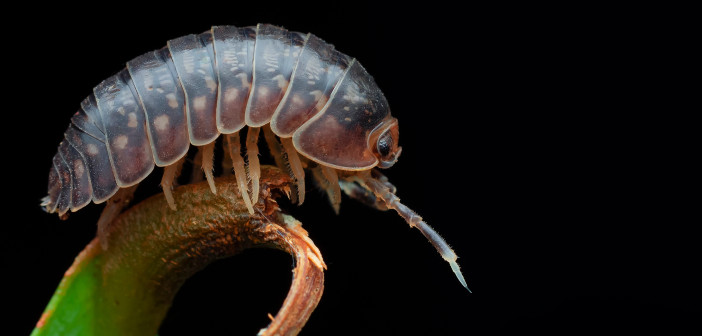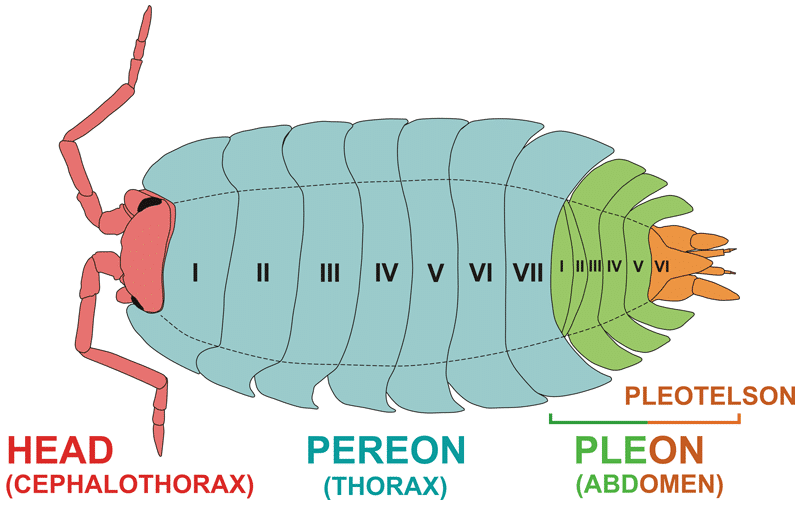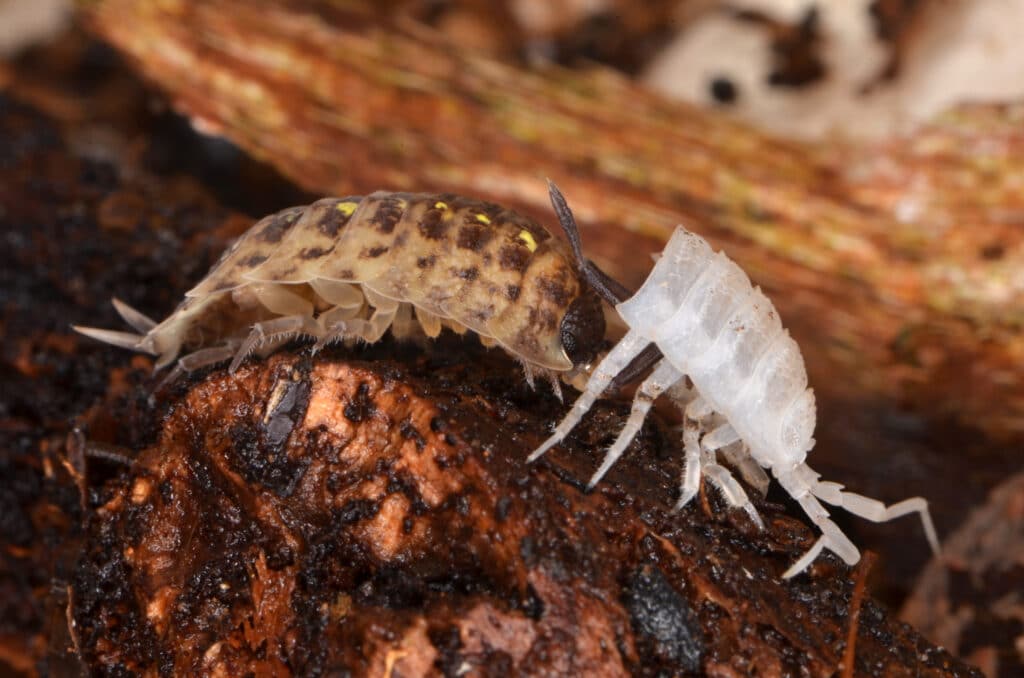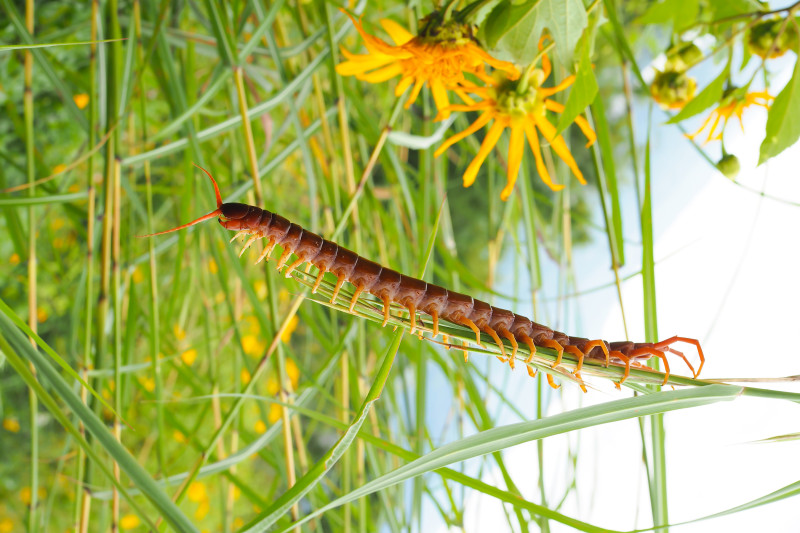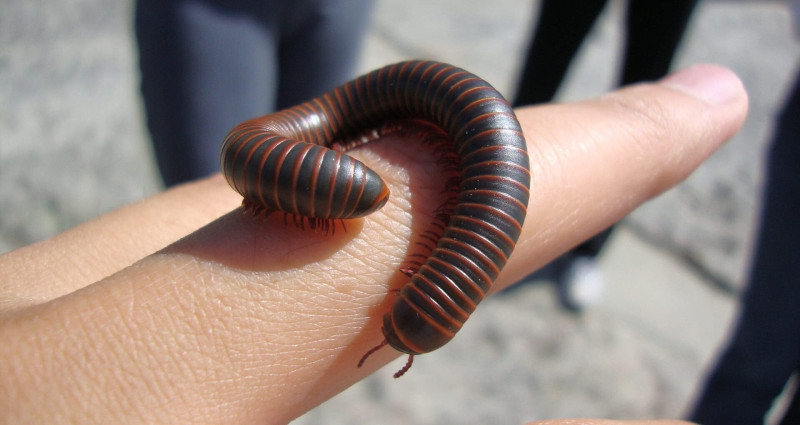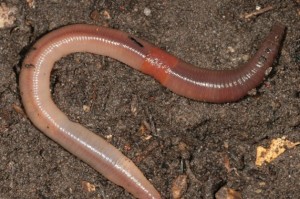Pill bugs are often overlooked in the garden, but they play a crucial role in maintaining the health of our ecosystems. These small, unassuming creatures, also known as “roly-poly bugs,” are nature’s recyclers. They break down decaying organic matter and return valuable nutrients to the soil. Their presence in your yard signifies a thriving, balanced ecosystem. Not only do they help in composting dead plants and leaves, but they control harmful fungi and bacteria, too. Pill bugs are harmless to humans and pets as they do not bite, sting, or carry diseases.
Not insects, but crustaceans
Pill “bug” is a misnomer because they aren’t insects; they’re crustaceans in the order Isopoda, which has over 10,000 species. Despite their insect-like appearance, pill bugs are more closely related to shrimp and lobsters. Along with other terrestrial isopods, they first appeared around 300 million years ago during the Carboniferous Period, a time when many marine organisms began adapting to life on land.
Pill bugs are in Armadillidae, a family of isopods called woodlice. They’re distinctive for their ability to roll into a ball for protection. Pill bugs are found worldwide, thriving in temperate climates where they can stay moist and protected from harsh elements. In the United States, they’re found in every state, often hiding under rocks, logs, and leaf litter, where they find the dampness they need. The most common U.S. species is the Common Pill Bug, Armadillidium vulgare, which is native to Europe but has been introduced around the world.
The largest pill bug in the world is aquatic: the Giant Isopod, Bathynomus giganteus, is found in deep-sea environments and can reach lengths of up to 14 inches (35.6 cm). That makes it a behemoth by terrestrial standards, where pill bugs are generally 0.2 to 0.7 inches (0.5–1.8 cm) in length.
Physical characteristics
A pill bug’s anatomy is a fascinating blend of simplicity and specialization, perfectly suited to its life on land. Externally, it’s covered by a hard exoskeleton divided into several segmented plates known as tergites. These protective and flexible plates allow the pill bug to curl into a tight ball when threatened.
External body
The body is divided into three main sections: the head (cephalon), the thorax (pereon), and the abdomen (pleon).
The head is small and contains simple compound eyes called ocelli, one on each side. They provide basic light detection but not detailed vision. Attached to the head are two pairs of antennae: the first pair is short and often not visible, while the second pair is longer and helps the pill bug sense its environment. The mouthparts, located on the underside of the head, are designed for chewing, allowing the pill bug to break down plant material and organic debris. The nervous system is relatively simple. A ventral nerve cord runs from the brain along the underside of the body, controlling movement and basic behaviors.
Thorax
The thorax consists of seven segments, each with a pair of legs, for a total of fourteen. These legs are jointed, enabling the pill bug to move with surprising speed for its size. Pill bugs don’t have lungs. Instead, they breathe through gill-like structures known as pleopodal lungs, located on the underside of the abdomen. These specialized structures require moisture, so pill bugs are often found in damp environments.
Pleotelson
At the end of the body is the pleotelson, which forms part of the rounded, protective shield that helps safeguard their soft underbelly when they curl into a ball—a behavior known as conglobation. Additionally, it serves as an attachment point for the uropods, which are small appendages that assist in locomotion and sensory functions.
Internal structure
Internally, the pill bug’s body is organized around its digestive system, nervous system, and reproductive organs. The digestive system leads from the mouth to a simple gut where food is broken down and nutrients are absorbed. Waste, in the form of small, dry pellets, consists mainly of undigested plant material and other organic matter.
Interestingly, pill bugs also have a unique way of dealing with ammonia, a byproduct of protein metabolism typically excreted in liquid form by many animals. Instead of excreting it as a liquid, which would cause them to lose valuable moisture, pill bugs convert it into a gas and release it directly through their exoskeleton. This ability helps them conserve water, crucial for their survival in terrestrial environments.
Pill bugs have an open circulatory system, meaning their blood (hemolymph) flows freely within the body cavity rather than being confined to vessels like in mammals. The heart is a simple tube-like structure that pumps hemolymph through the body, delivering oxygen and nutrients to the tissues.
Reproduction
Reproductive organs are located in the abdomen. Mating typically occurs during the warm months. After mating, which occurs two to three times a season, the female deposits her fertilized eggs into her marsupium. The marsupium is a specialized brood pouch formed by overlapping plates (oostegites) on the underside of her body. It provides a protected, moist environment for the eggs. One hundred to 200 fertilized eggs will stay there for several weeks, developing into miniature pill bugs known as mancae. Mancae hatch with six pairs of legs. After their first molt, they have seven pairs.
Pill bugs periodically shed their old exoskeleton (molt) as part of their growth process to accommodate their increasing size. The molting process in pill bugs is unique compared to many other arthropods. Mancae molt in one stage. Adults molt in two stages: first, the back half of the exoskeleton is shed, and after a few days, the front half is shed. This two-part process helps reduce the time they’re vulnerable to predators, as they are softer and less protected. Molting occurs several times throughout a pill bug’s life as it grows, particularly during its early stages of development.
Lifespan
Pill bugs have relatively short lifespans, typically living up to two years in the wild. They can reproduce multiple times, ensuring their populations remain stable.
Pill bug defenses and predators
Pill bugs have developed several effective strategies to defend themselves against predators. One of their most well-known defenses is their ability to curl into a tight ball, a behavior known as conglobation. By rolling up, they protect their softer, vulnerable undersides and expose only their hard, segmented exoskeleton. This armored shell acts as a shield, making it difficult for predators to penetrate and access their body.
In addition, they rely on their nocturnal and reclusive behavior as a form of defense. They’re most active at night or in low-light conditions, which helps them avoid detection by daytime predators. During the day, they hide in moist, dark places like under rocks, logs, or leaf litter, where they are less likely to be found.
Despite these defenses, pill bugs are preyed upon by various animals. Birds, particularly those that forage on the ground, are common predators. Frogs, toads, and small mammals, such as shrews, also feed on pill bugs. Additionally, some insects, like beetles and spiders, hunt them. Even though pill bugs have evolved effective ways to protect themselves, they remain a key part of the food chain, contributing to the diet of many predators in their ecosystems.

